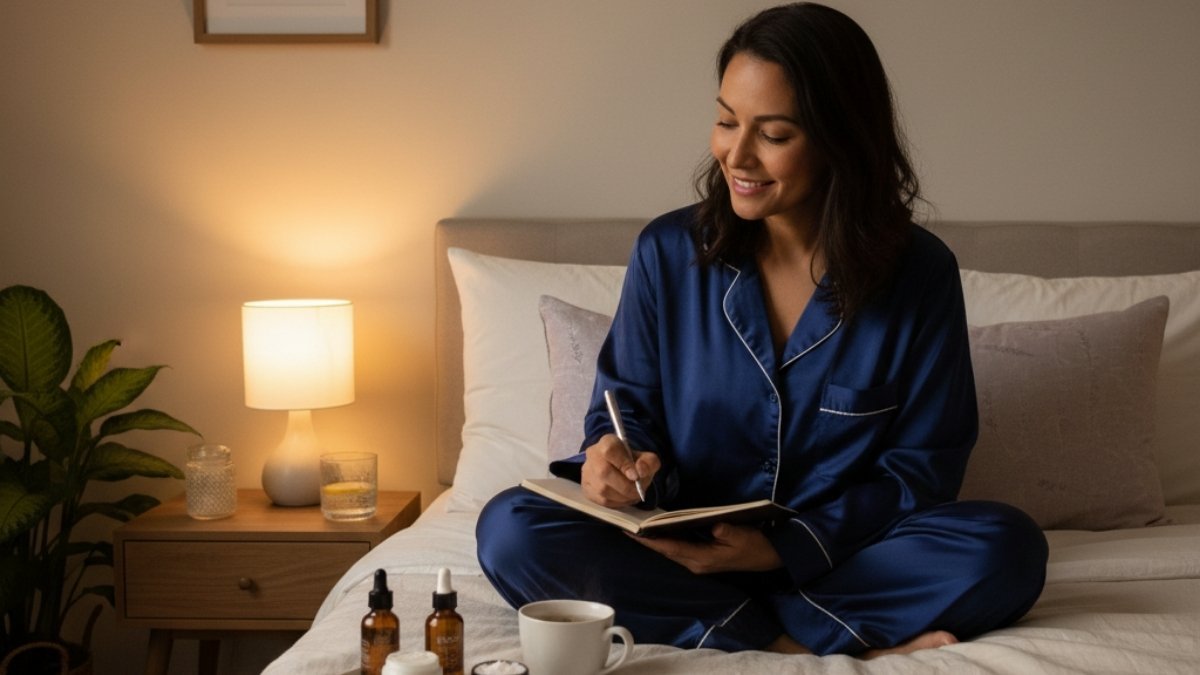
Maybe the lighting is a little too bright today, and then you see it—a new line. Not from laughing, just one that seems to have settled in without an invitation. It feels like it appeared overnight, and there’s that familiar little sigh: “Okay, what’s the move now?”
If you’ve had that moment, you are absolutely not alone. But here’s the powerful truth: that “overnight” feeling is actually your secret weapon. Your skin is a complete powerhouse, and it does its absolute best, most intense work when you’re asleep. It isn’t just resting; it’s on a dedicated mission to repair, rebuild, and regenerate. Think of it as a highly efficient, tiny construction crew that only clocks in after sunset. Over the next 30 days, we’re going to equip that crew with everything it needs to perform a total overhaul.
This isn’t about fighting aging; it’s about optimizing your skin’s natural rhythm. Your skin cells follow their own internal circadian clock, just like your sleep cycle. During the day, they’re focused on defense—shielding you from the sun and pollution. But once the lights go out? The entire operation shifts to renewal. DNA repair accelerates, and cell production peaks right around midnight.
Why the 30-day challenge? A healthy skin cycle—the time it takes to make new cells and shed old ones—is about 28 days when you’re young. As we age, that process drastically slows down, sometimes taking 50 or 60 days, which is why skin can look dull and fine lines linger. These nine habits are designed to re-sync that cycle. By the end of one full, optimized month, you can expect to see a genuinely tangible difference.
Ready to reset your skin? Let’s dive in.
Habit 1: Nail the Cleanse-and-Seal Combo
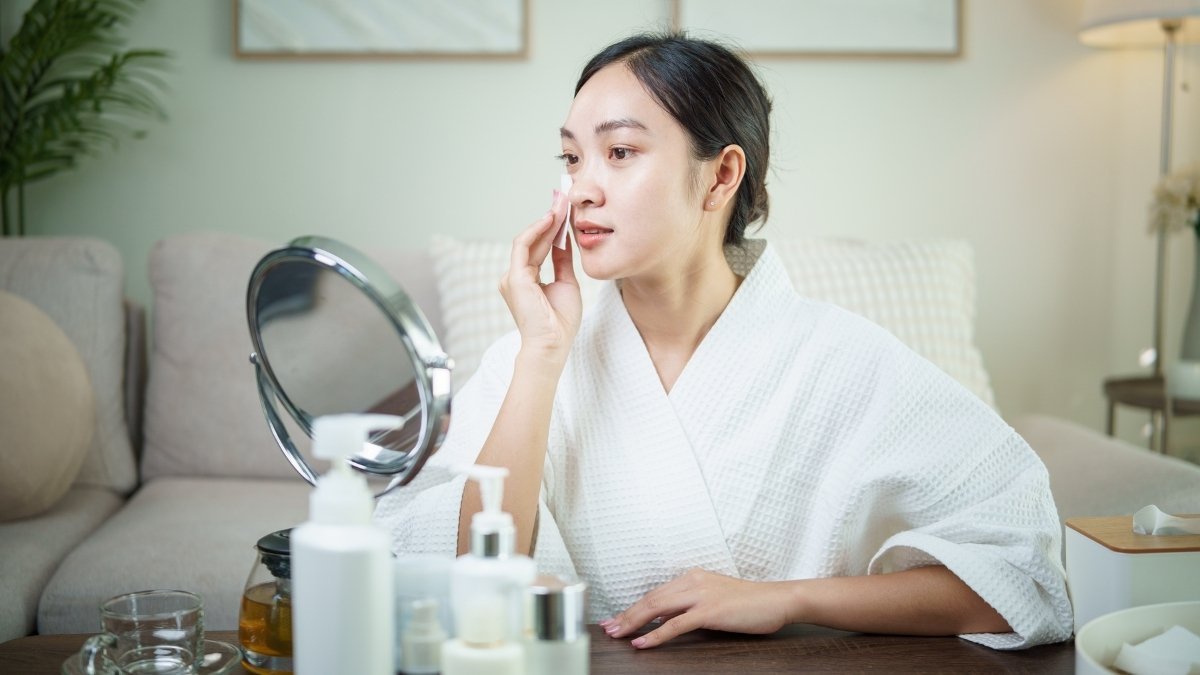
Okay, this is the absolute bedrock of any good routine. And it’s not two separate steps, but one fluid motion: wash the day off, then lock in moisture for the night.
You’re Working With Your Skin, Not Against It
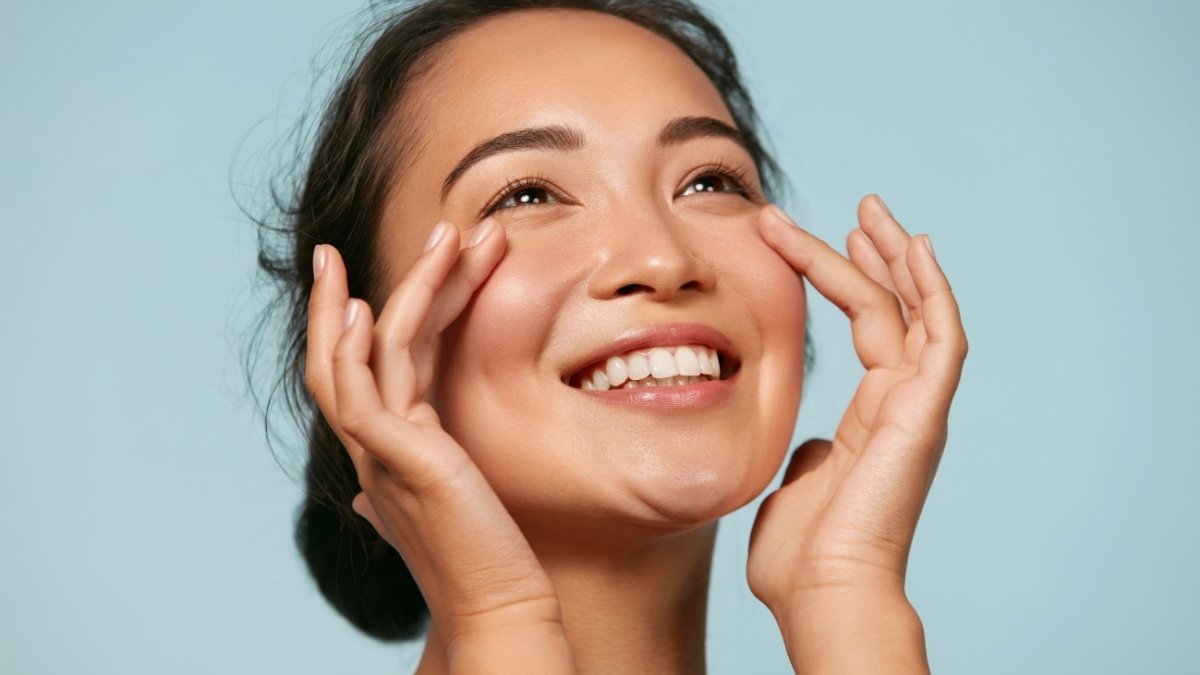
Honestly, going to bed with your makeup on is non-negotiable. Throughout the day, your face collects a film of makeup, sunscreen, pollution, and oil. If you leave that on, it doesn’t just clog your pores; it creates free radicals that actively sabotage your skin’s repair crew. You have to give them a clean worksite.
But once your skin is clean, it faces a new challenge: moisture loss. Your skin barrier naturally becomes more permeable at night. This is great because it means your products can sink in better, but it’s also a problem because water can escape more easily. This is called Transepidermal Water Loss (TEWL), and it’s why you can wake up feeling dry, which makes every little line look more obvious. A good moisturizer acts like a lid on a pot, trapping that precious water inside your skin.
Gentle Does It
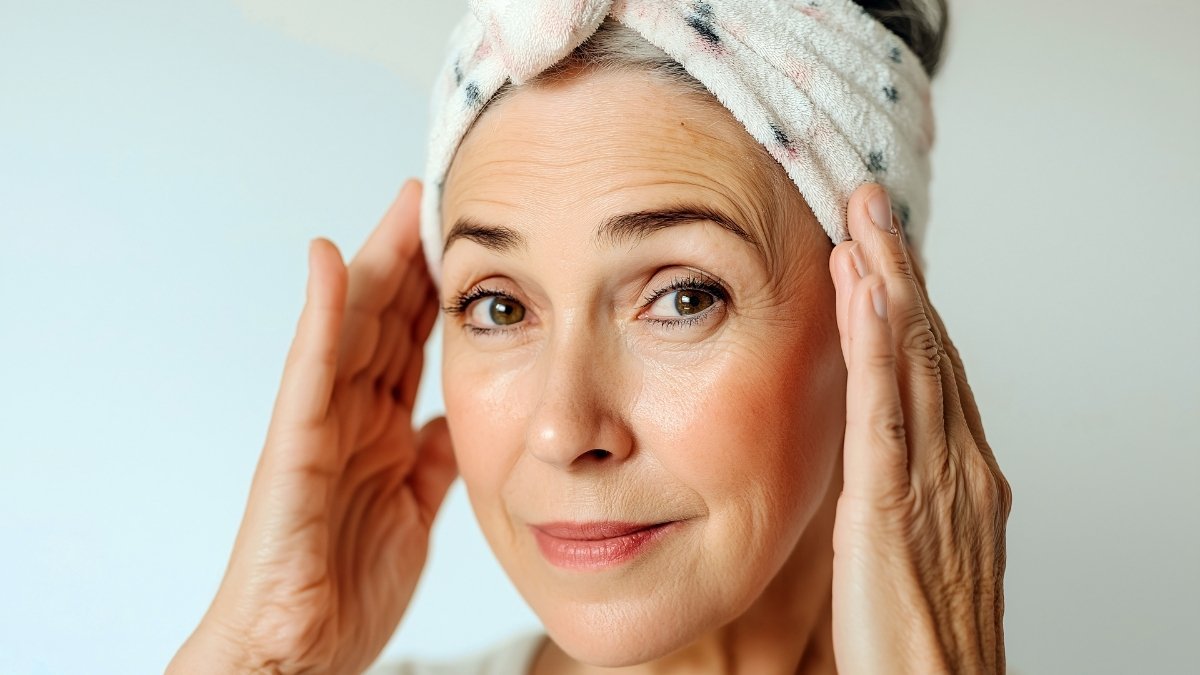
You don’t need to scrub your face into oblivion. In fact, that’s the worst thing you can do. Dermatologists agree: be gentle.
Use a mild, non-abrasive, alcohol-free cleanser. Use your fingertips—not a rough washcloth—and lukewarm water, never hot. Pat your skin dry gently. If you wear a lot of makeup or sunscreen, the “double cleanse” is your best friend. Start with an oil-based cleanser to melt everything off, then follow up with your gentle water-based cleanser to get the skin itself truly clean.
Then, while your skin is still a little damp, it’s time to seal. Look for a moisturizer with these two ingredients:
- Hyaluronic Acid (HA): Think of this as a moisture magnet. It’s a molecule that can hold up to 1,000 times its weight in water, pulling hydration into your skin and plumping it up from the inside. It provides an immediate, satisfying softening of fine, dry lines.
- Ceramides: If your skin cells are bricks, ceramides are the mortar holding them all together. They’re lipids that are essential for a strong skin barrier, the very thing that stops water from evaporating. We lose them as we age, so putting them back on topically is like patching up the holes in your skin’s defense wall.
Habit 2: Bring in the Heavy Hitter: Retinoids
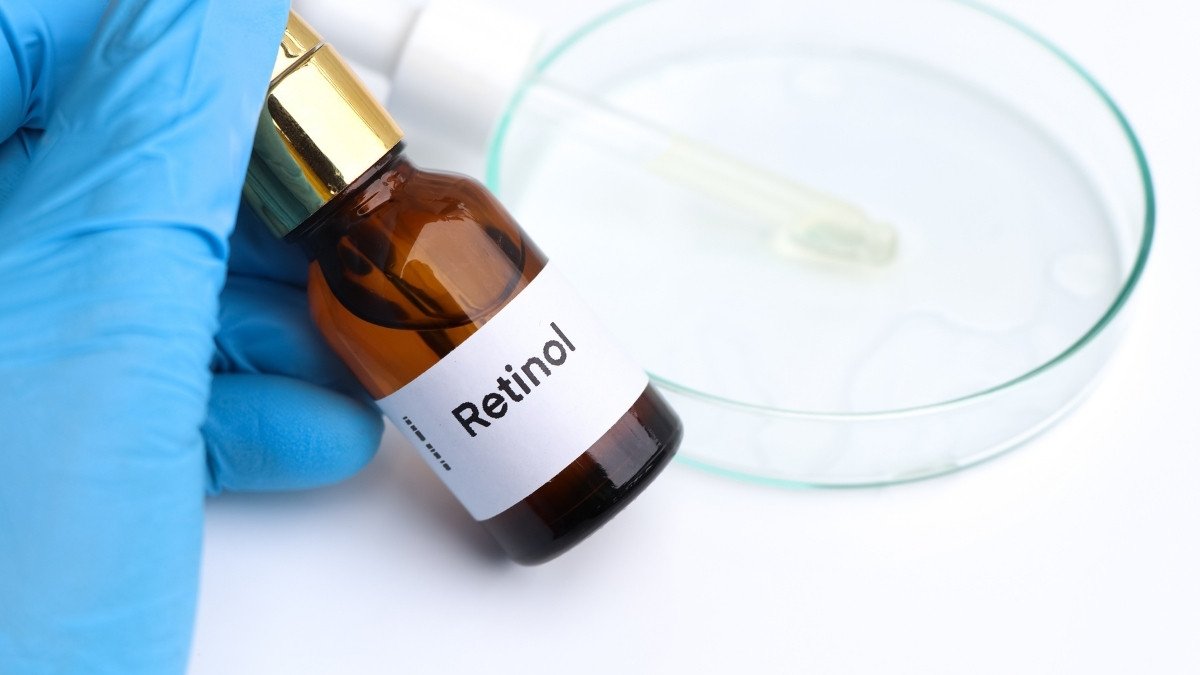
If there’s one ingredient that virtually every dermatologist agrees on for anti-aging, it’s this one. Retinoids, which are derivatives of Vitamin A, are the gold standard for a reason.24 They don’t just sit on the surface; they communicate directly with your skin cells and tell them to, well, act young again.
It’s a Cellular Pep Talk
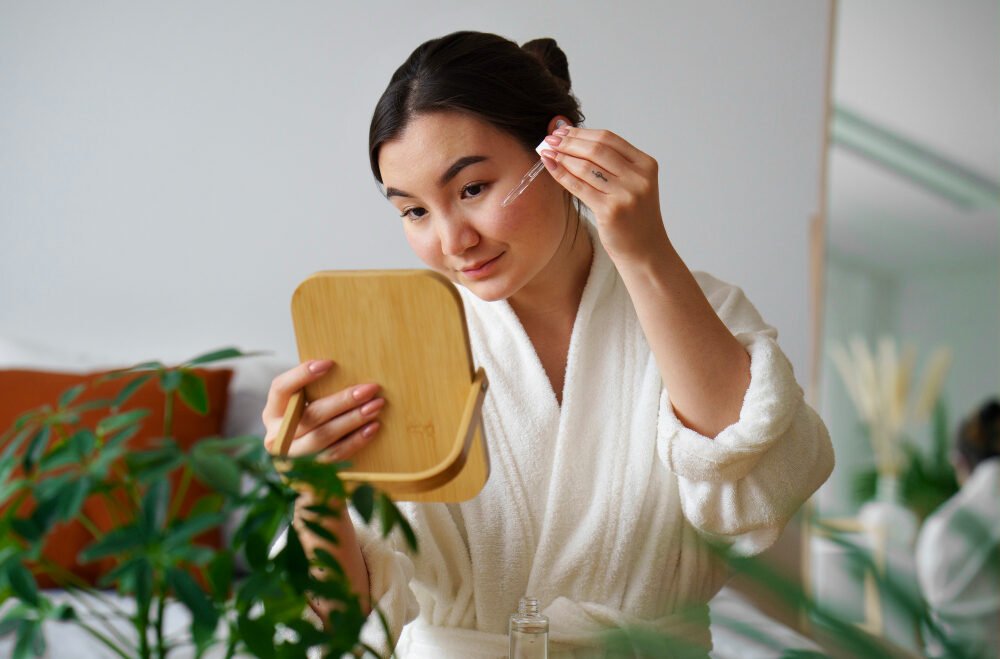
When you apply a retinoid, it sinks into your skin and essentially gives your cells a new set of instructions.5 This results in two major things:
- It speeds up cell turnover. As we get older, our skin gets a little lazy about shedding old, dull cells. Retinoids hit the fast-forward button, pushing fresh, new cells to the surface more quickly. This is what gives you that smoother, more radiant look.
- It builds and protects collagen. Collagen is the protein that keeps your skin firm and bouncy. Retinoids work on it from two angles: they tell your skin’s collagen factories (called fibroblasts) to make more, and they stop the enzymes that break down the collagen you already have. It’s a brilliant one-two punch.
Start Low and Go Slow
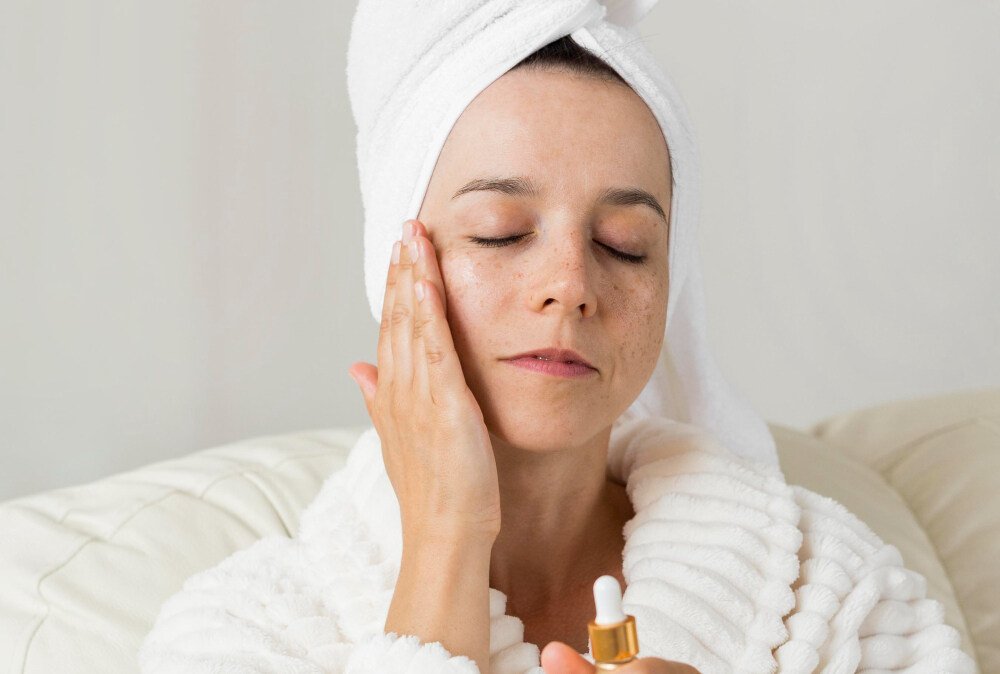
Retinoids are powerful, and your skin needs time to get used to them. You might have heard horror stories about the “retinoid uglies”—that initial period of dryness, peeling, and irritation. You can minimize this by being smart about it.
- Start with a lower concentration. Apply a pea-sized amount just every third night for a couple of weeks. Then, move to every other night. Eventually, your skin will tolerate it nightly.
- Apply to a dry face. Wait about 20 minutes after washing your face. Applying it to damp skin can sometimes increase irritation.
- And yes, you can see results in 30 days. This isn’t just hype. A huge analysis of multiple studies on a 0.1% retinol formula found that people saw “statistically significant improvements” in crow’s feet and other wrinkles in as little as four weeks.
Let’s Bust Some Retinol Myths Right Now

- Myth: Retinol thins your skin. Nope. It might make you peel at first, which is where this idea comes from. But what’s actually happening is that it’s thickening the deeper layers of your skin by building more collagen, making your skin stronger and more resilient in the long run.
- Myth: Retinol is just an exfoliant. Not really. Exfoliants like acids work by dissolving the glue that holds dead cells together on the surface. Retinol works from the bottom up, telling your skin to make new cells faster. The flaking is a side effect of that rapid renewal, not the main action.
A final thought on this: not all retinols are created equal. The ingredient is notoriously unstable. The study that showed results in four weeks used a special formula that stabilized the retinol and delivered it slowly into the skin. So, don’t just chase the highest percentage. Look for a well-formulated product from a brand that does the research.
Habit 3: Deploy the Special Forces: Peptides and Eye Cream
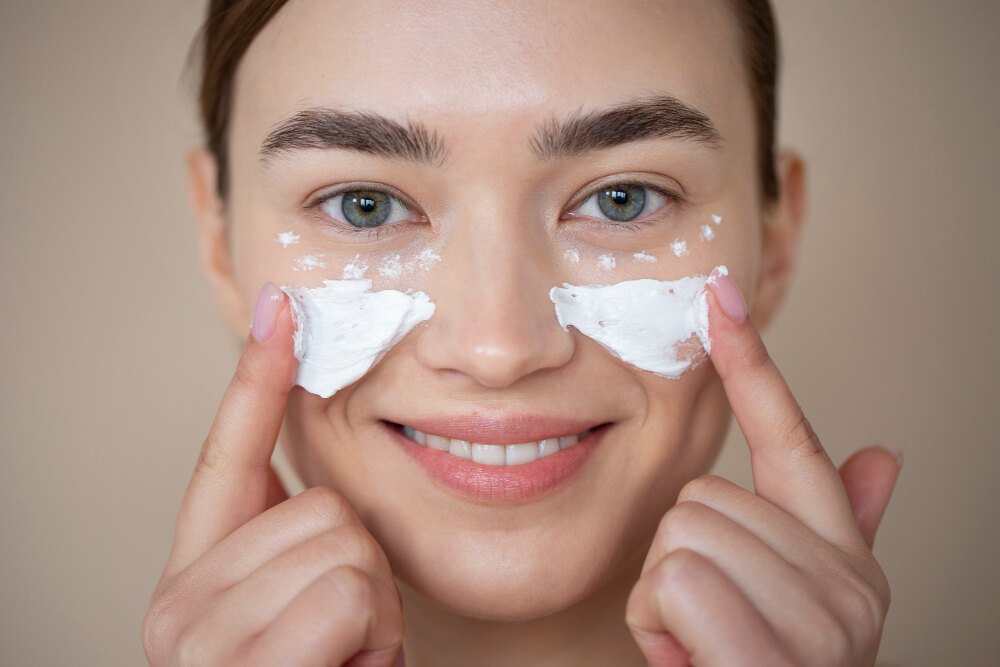
A retinoid is your army, covering the whole face. But for the delicate, tricky terrain around your eyes, you need to send in the special forces. The skin there is thinner and has fewer oil glands, which is why it’s often the first place to show lines.16
Sending the Right Messengers
This is where peptides come in. Peptides are just short chains of amino acids, the building blocks of protein. In skincare, they act like tiny messengers that can sneak into your skin and deliver specific instructions to your cells, like “Hey, make more collagen over here!”.
One of the most well-researched duos is Palmitoyl Tripeptide-1 and Palmitoyl Tetrapeptide-7. The first one is great at telling your skin to build more of its structural components, like collagen and elastin. The second one is a champ at calming inflammation (a big driver of aging) and helping to regenerate collagen fibers. They’re a fantastic team.
A Gentle Touch
- Order of Operations: Apply your peptide serum after cleansing but before your moisturizer. You want those little messengers to have a clear path into the skin. Your eye cream should be the very last step.
- Technique Matters: Use your ring finger—it has the gentlest touch—to tap a pea-sized amount of eye cream around your entire orbital bone, from under your eye right up to your brow bone. No pulling or tugging!
- The Proof: In a 12-week study on an eye cream using that peptide power-duo, people saw a nearly 20% reduction in fine lines by week 8. By the end of the study, their skin hydration was up by 28% and elasticity had improved by almost 19%. This stuff works, and you can see results within a couple of months.
Habit 4: Clear the Path with Smart Exfoliation
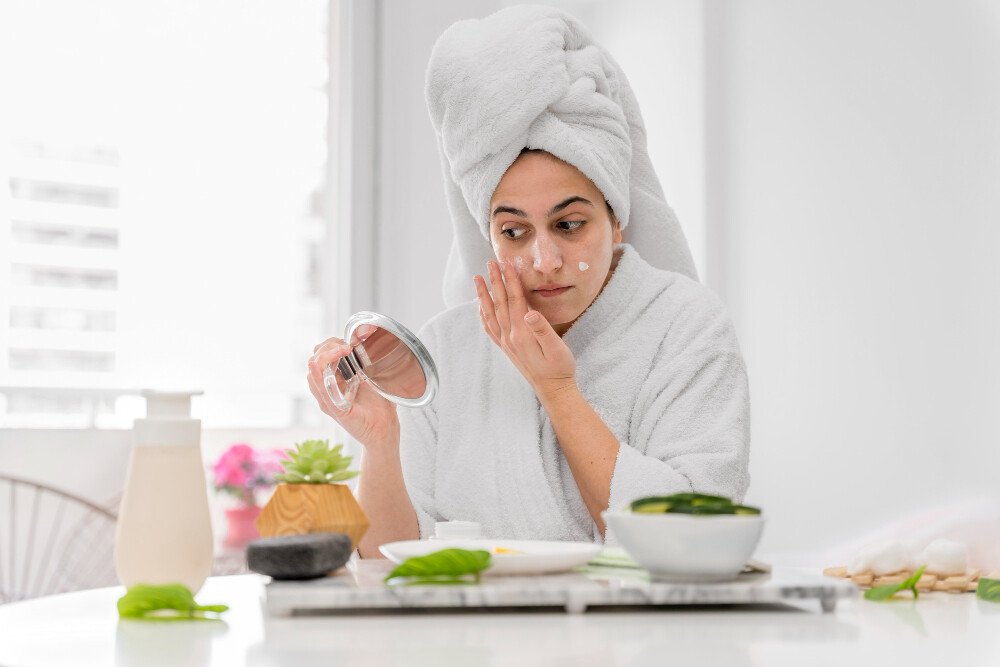
Think of it this way: you wouldn’t wax a dirty car. Exfoliation is the crucial prep step that makes sure all those amazing, expensive ingredients you’re using can actually do their job. Its goal is to gently remove the layer of dead skin cells that can get in the way.
Unlocking Your Other Products
That top layer of dead skin can act like a roadblock, preventing your serums from penetrating properly. By clearing it away a few times a week, you ensure your retinoids and peptides can get down into the skin where they need to be to work their magic. It’s about getting the best possible return on your investment.
Choose Your Weapon Wisely (Hint: It’s Not a Scrub)
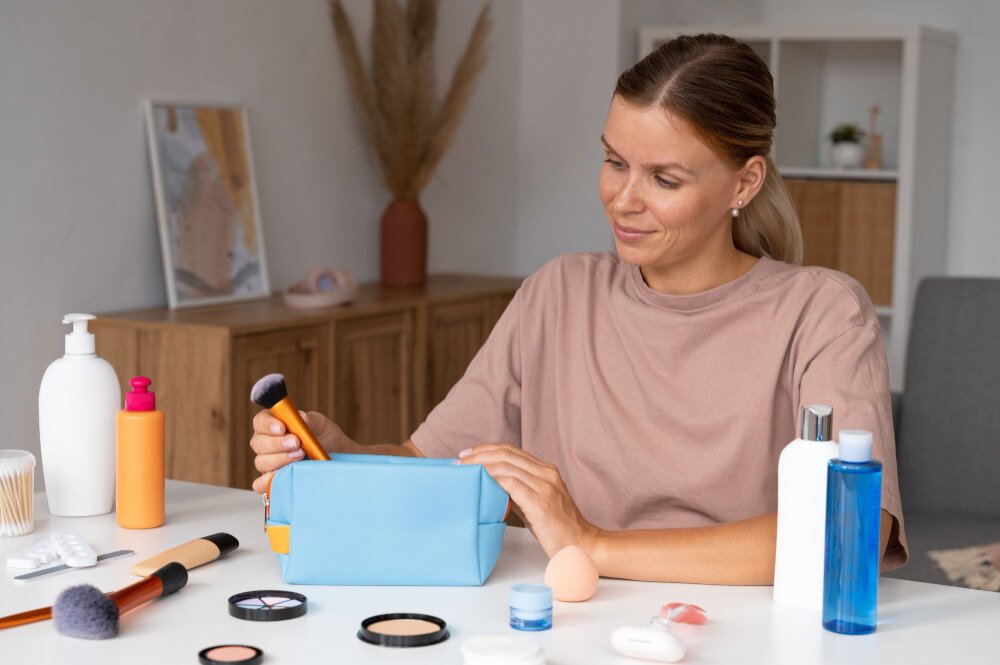
This is important. For aging skin, dermatologists are pretty much in agreement: chemical exfoliants are better than physical scrubs.
- The Problem with Scrubs: Those gritty physical scrubs (we all remember the “dreaded apricot scrub” ) can be way too harsh. The particles can create tiny micro-tears in your skin, leading to inflammation and a damaged barrier—the exact opposite of what you want.
- The Genius of Acids: Chemical exfoliants, like Alpha-Hydroxy Acids (AHAs), work more elegantly. They dissolve the “glue” holding dead skin cells together, letting them shed gently. AHAs like glycolic and lactic acid also have a bonus benefit: they can help stimulate collagen production and improve hydration.
The Exfoliation Showdown: AHAs vs. Scrubs
Comparing chemical and physical methods for brighter, healthier skin.
Mechanism
Key Benefits
Risks for Aging Skin
Derm. Consensus
The Rule: Don’t overdo it. Exfoliate just one to three times a week. And to be safe, maybe don’t use your acid on the same night you use your retinoid, at least not at first. Give your skin a break.
The Lifestyle Upgrades That Make Everything Work Better
Look, you can have the most expensive skincare in the world, but if your lifestyle is working against you, you’re fighting an uphill battle. These next five habits are about creating the perfect internal and external environment for your skin to thrive.
Habit 5: Actually Get Your “Beauty Sleep”
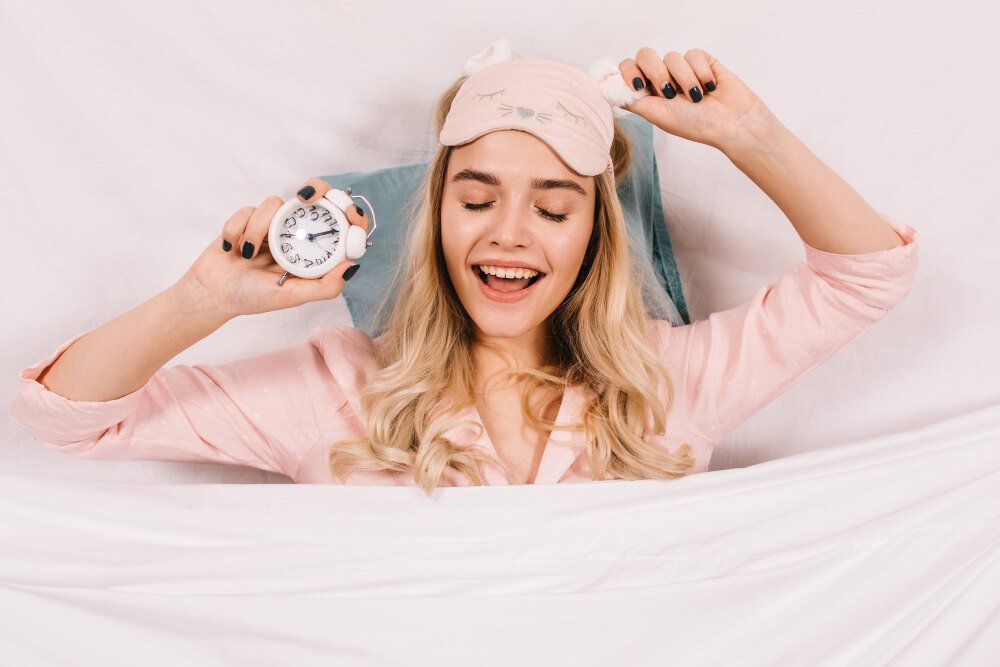
This isn’t just a cute saying; it’s hard science. Getting 7-9 hours of quality sleep is probably the most powerful (and completely free) anti-aging treatment you can give yourself.
Your Body’s Built-In Repair Cycle
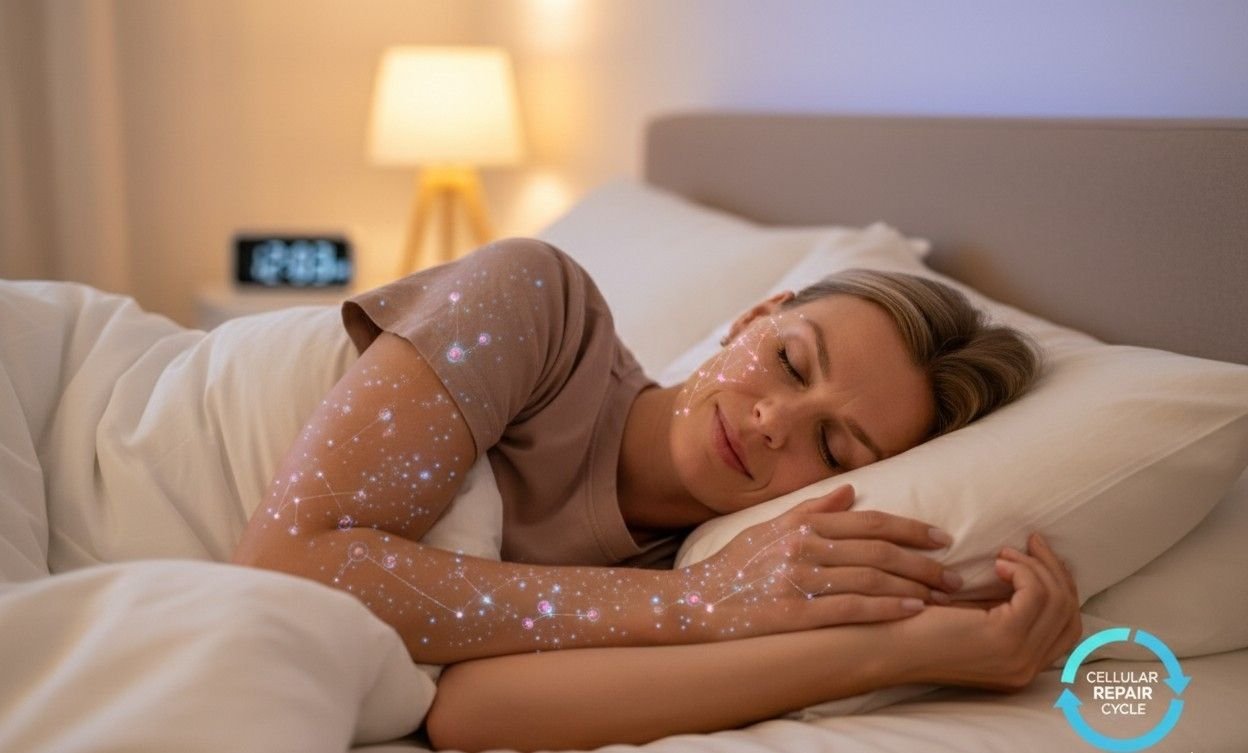
When you fall into a deep sleep, your body’s entire chemistry changes.
- The Hormone Flip: Your brain releases a surge of Human Growth Hormone (HGH), which is critical for repairing cells and building collagen. At the same time, levels of cortisol, the stress hormone, plummet. This is huge because cortisol is a known collagen-killer.
- The Cost of Cutting Corners: The effects of bad sleep are immediate and measurable. One study found that good sleepers had a 30% better skin barrier recovery than poor sleepers. Even a single night of bad sleep can lead to measurably less hydration and elasticity in your skin. Over time, it just accelerates aging.
It’s All About Routine

The goal is a consistent 7 to 9 hours. This means practicing good “sleep hygiene.” Create a routine that signals to your body it’s time to wind down. If you’re only getting five hours of sleep, you’re asking your retinoid to build collagen in an environment where your own body is pumping out a hormone that destroys it. It just doesn’t make sense. Align your biology with your skincare, and you’ll see incredible results.
Habit 6: Outsmart “Pillow Face”

Did you know not all wrinkles are created equal? Some aren’t from smiling or frowning; they’re literally pressed into your face while you sleep. These are called sleep wrinkles, and no cream can fix them because they’re a mechanical problem.46
The Force of the Pillow
When you sleep on your side or stomach, your face gets smushed against the pillow for hours. That compression and shearing force create vertical creases that are different from expression lines. When you’re young, they bounce back. As you get older and lose elasticity, they can become permanent.
Two Simple Ergonomic Fixes
- Try to Sleep on Your Back. This is the simplest fix. No face-on-pillow contact means no compression wrinkles.
- Switch to a Silk Pillowcase. If you just can’t stay on your back, this is the next best thing. The smooth surface of silk means your skin glides instead of tugs, reducing friction. As one New York dermatologist, Dr. Ryan Turner, puts it, the friction from cotton can directly “lead to wrinkles”. Plus, unlike absorbent cotton, silk doesn’t suck up all your expensive night cream and the natural moisture from your skin.
Habit 7: Create a Little Skin Oasis with a Humidifier

The air in your bedroom, especially with the heat or AC blasting, is often incredibly dry. And that dry air is thirsty—it will literally pull moisture right out of your skin all night long.
Fighting the Micro-Environment
Dry air creates a moisture vacuum. Your skin is hydrated, the air is not, so the air wins, speeding up that Transepidermal Water Loss we talked about. Running a humidifier at night is like creating a protective moisture bubble around you.
Aim for the Sweet Spot
The ideal indoor humidity level is between 30% and 50%. A simple humidifier adds moisture back into the air, reducing that dehydrating pull on your skin. As dermatologist Dr. Jessica Wu says, it helps keep skin “supple, radiant, and healthy”. It’s a simple change that makes a huge difference, especially if your skin is naturally dry or sensitive.
Habit 8: Watch Out for These Two Evening Saboteurs: Sugar and Alcohol

What you put in your body in the hours before bed can either help or seriously hurt your skin’s repair efforts. And the two biggest culprits are sugar and alcohol.
The Internal Attack
- Sugar and Glycation: This sounds complicated, but it’s pretty simple. When you have excess sugar in your system, the sugar molecules attach themselves to proteins like collagen and elastin. This process, called glycation, creates nasty little molecules called “AGEs” (Advanced Glycation End Products). These AGEs make your flexible, bouncy collagen stiff, brittle, and weak. It’s one of the most direct ways to accelerate wrinkle formation.
- Alcohol’s Triple Threat: Alcohol is just brutal on the skin. First, it’s a diuretic, so it dehydrates you from the inside out, making lines look worse. Second, it causes inflammation, which breaks down collagen. And third, it depletes your body of Vitamin A—the very nutrient that retinoids are made from! To top it all off, while it might make you feel sleepy, it disrupts the deep, restorative sleep your skin needs for repair.
A Simple Swap
You don’t have to be perfect, but try to limit sugary desserts and alcohol, especially in the evening. Opt for some berries or a cup of herbal tea instead.44 Having a glass of wine and a piece of cake before bed is like sending in a demolition crew right before your skin’s repair team is supposed to start its shift.
Habit 9: Get in Sync with Your Skin’s Clock
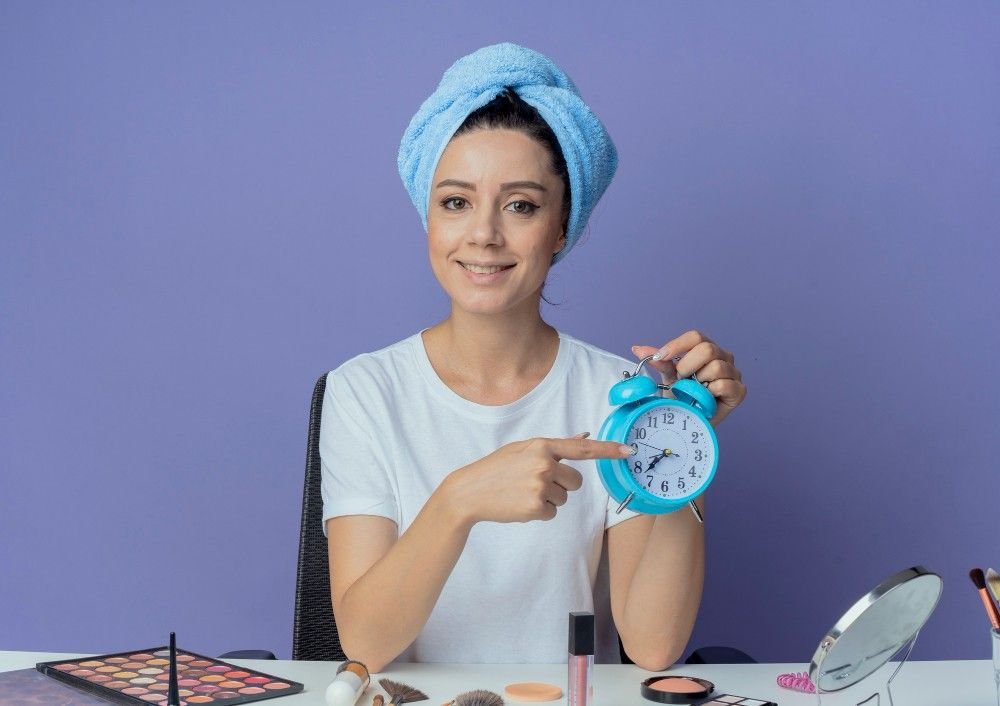
This is the final habit, and it’s the one that ties everything else together: consistency. Your skin runs on a schedule. By creating a predictable nightly routine, you reinforce that schedule and make every other habit more powerful.
Training Your Biology
Your skin’s internal clocks are synchronized by a “master clock” in your brain, which takes its cues from your daily habits—especially your sleep-wake cycle. A consistent schedule sends a strong, clear signal to your skin that says, “Okay, it’s 10 PM, time to start the repair work!”. An erratic schedule is like giving your skin a constant case of jet lag.
The Power of Ritual
- Have a Bedtime. The most important thing you can do is go to bed and wake up at roughly the same time every day. Yes, even on weekends.
- Create a Wind-Down Ritual. In the hour before bed, do something that calms you. Take a warm shower, do some gentle stretching, read a book—anything that tells your body it’s time to shift from “go” mode to “repair” mode.
Consistency turns your routine from a series of random actions into a powerful, synchronized biological event. It ensures that when your skin is most permeable and ready to absorb products, you’re actually applying them. It’s about showing up for your skin, night after night.
Need a Little More Help? Look Into These.
Building these habits is the most important part, but sometimes having the right tools can make the process feel a little easier and more luxurious. You don’t need to spend a fortune, but if you’re looking to give your routine a boost, here are a few well-loved and dermatologist-approved products that align with the habits we’ve talked about.
1. La Roche-Posay Retinol B3 Serum.

A fantastic and widely available option if you’re starting your retinoid journey. It combines pure retinol with vitamin B3 (niacinamide) to help soothe the skin, making it effective yet gentle enough for many who are new to the ingredient.
2. CeraVe PM Facial Moisturizing Lotion.

This is a cult favorite for a reason. It’s a lightweight, non-greasy night cream packed with both ceramides and hyaluronic acid to help restore your skin’s barrier and lock in moisture overnight. It’s a simple, effective, and affordable workhorse.
3. CeraVe Skin Renewing Eye Cream.

To give that delicate eye area some targeted help, this cream is a great choice. It contains a peptide complex to help firm the skin and smooth fine lines, plus niacinamide to brighten. It’s a solid, budget-friendly option for Habit 3.
4. Fisher’s Finery Mulberry Silk Pillowcase.

If you’re ready to upgrade from cotton, this is a fantastic, high-quality option that won’t completely break the bank. It’s made from 100% mulberry silk, which helps reduce friction on your skin and hair, and it’s durable enough to be machine-washed.
5. Everlasting Comfort Cool Mist Humidifier.
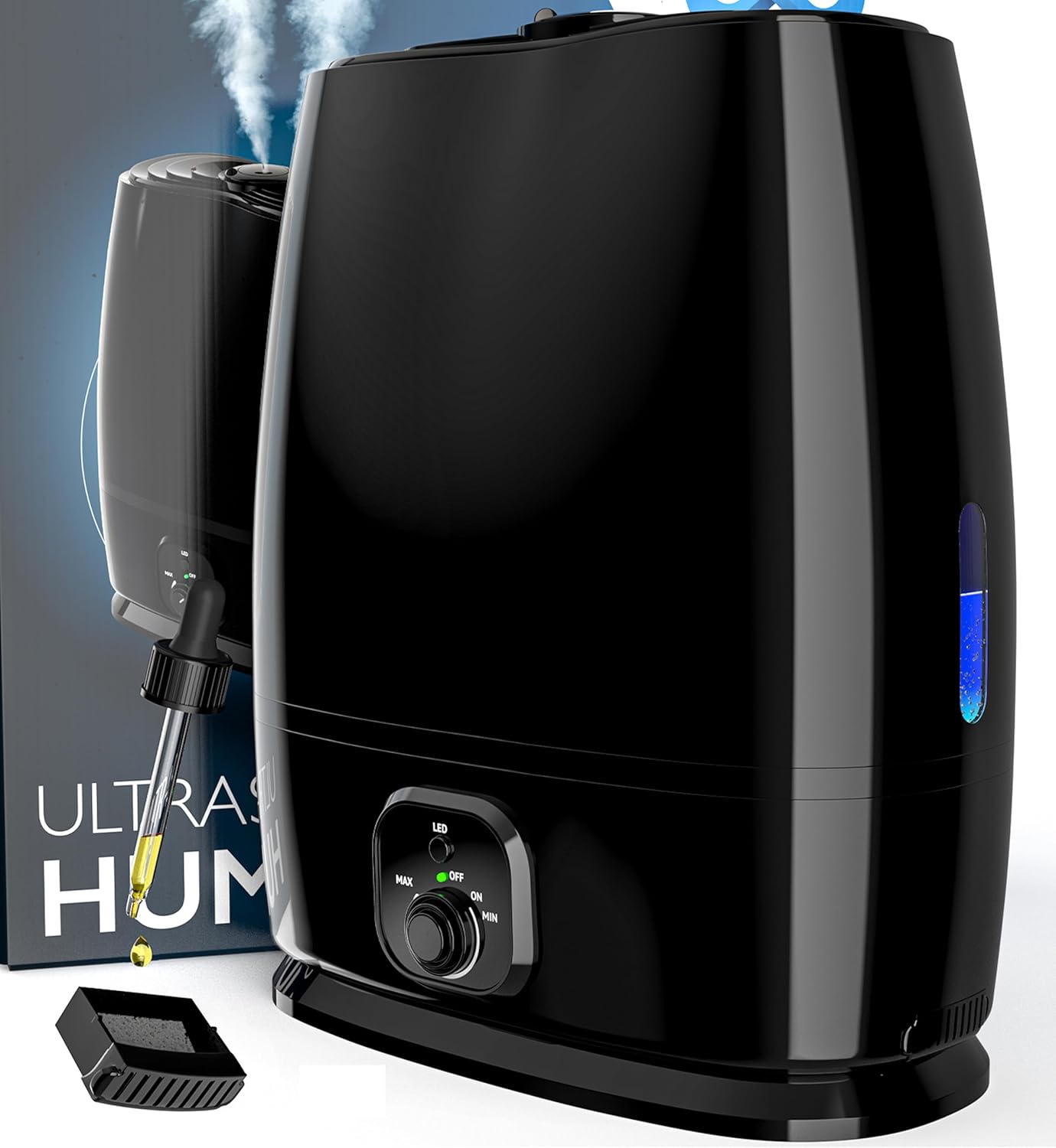
To create that skin-loving oasis in your bedroom, a reliable humidifier is key. This one has a large tank so it can run all night, an essential oil tray if you like a calming scent, and it’s quiet enough not to disturb your precious sleep.
Your 30-Day Plan: You’ve Got This
So there you have it. This isn’t about adding a dozen complicated steps or buying a whole new cabinet of products. It’s about being intentional. It’s about understanding the incredible work your skin is already doing every night and simply giving it the support it needs.
The skincare provides the tools. The lifestyle habits create the right work environment. Consistency is the project manager who makes sure everything happens on schedule.
Commit to this for one full skin cycle—just 30 days. You’re not trying to turn back time. You’re just partnering with it, turning your nightly rest into your most powerful state of rejuvenation. You might be surprised at what you see in the mirror a month from now.






